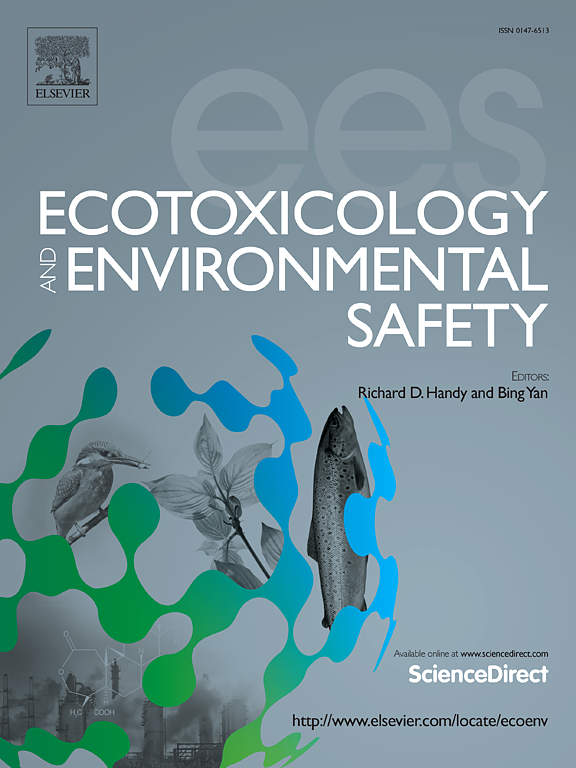Exploring comprehensive toxic effects of fludioxonil on Caenorhabditis elegans
IF 6.2
2区 环境科学与生态学
Q1 ENVIRONMENTAL SCIENCES
引用次数: 0
Abstract
Fludioxonil is a phenylpyrrole fungicide widely used in agriculture. Despite its efficacy against target fungi, there have been concerns raised regarding the potential adverse effects on non-target organisms. This study assesses its toxicity effects on Caenorhabditis elegans (C. elegans) across physiological, cellular, neuronal, and behavioral dimensions. At the physiological level, fludioxonil significantly reduces the growth, lifespan, and reproductive capacity of C. elegans, indicating disruptive effects on overall organismal health. At the cellular level, fludioxonil elevates reactive oxygen species (ROS), which can result in oxidative stress. At the neuronal level, fludioxonil induces dopaminergic neurodegeneration and upregulates critical neurotransmission genes dat-1 and unc-47, which affects the nervous system. At the behavioral level, C. elegans exposed to fludioxonil exhibits increased locomotion and abnormal behaviors. These findings collectively demonstrate that fludioxonil exerts multifaceted toxic effects on non-target organisms, challenging the assumption of its safety and suggesting significant implications for ecosystem health and safety regulations.
求助全文
约1分钟内获得全文
求助全文
来源期刊
CiteScore
12.10
自引率
5.90%
发文量
1234
审稿时长
88 days
期刊介绍:
Ecotoxicology and Environmental Safety is a multi-disciplinary journal that focuses on understanding the exposure and effects of environmental contamination on organisms including human health. The scope of the journal covers three main themes. The topics within these themes, indicated below, include (but are not limited to) the following: Ecotoxicology、Environmental Chemistry、Environmental Safety etc.

 求助内容:
求助内容: 应助结果提醒方式:
应助结果提醒方式:


